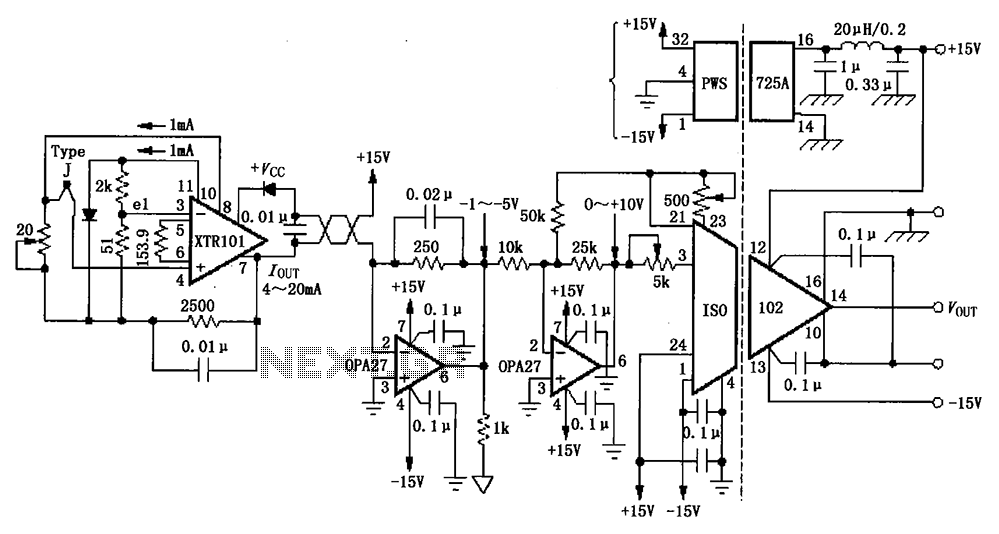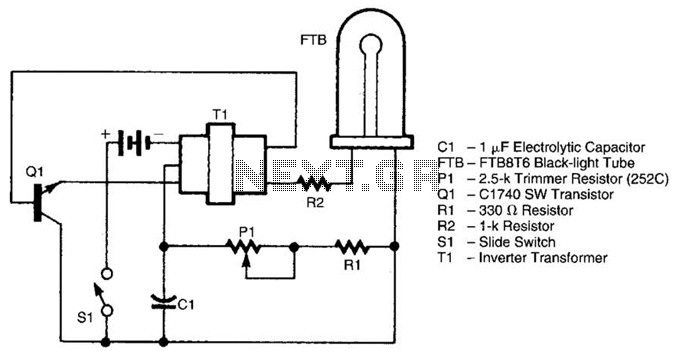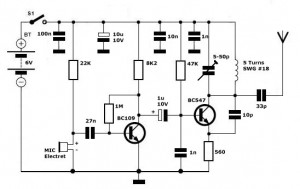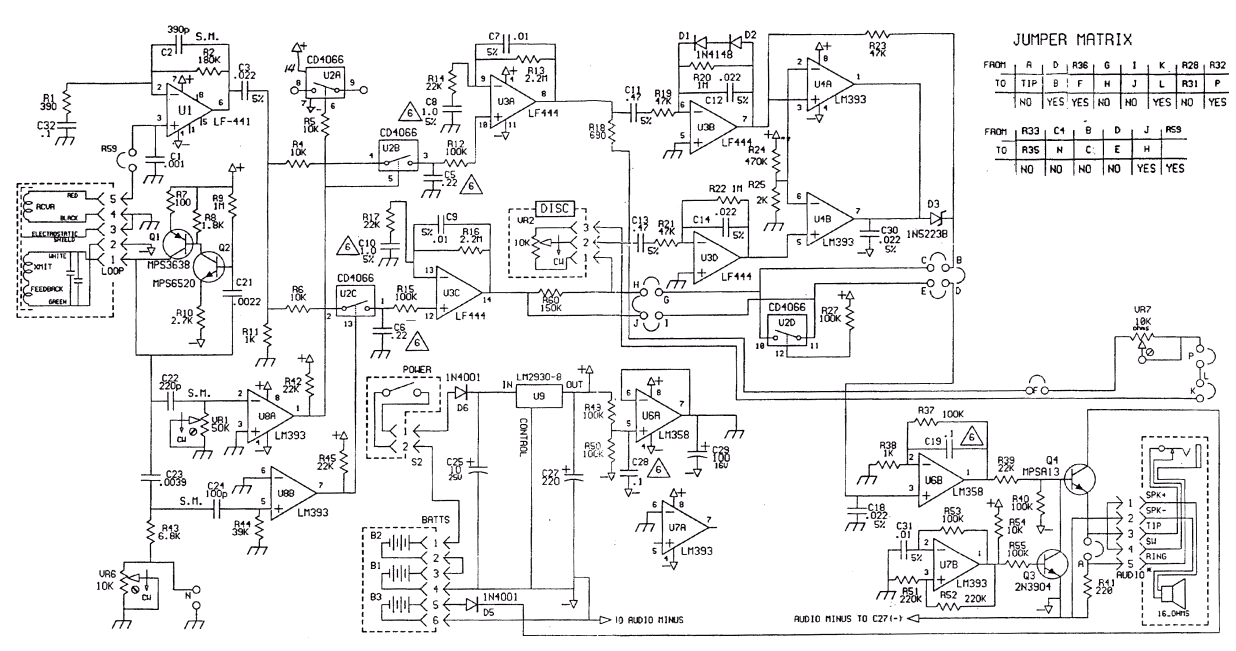
Having a cold junction compensation Remote Isolated Thermocouple transmitter circuit diagram ISO102 XTR101

The circuit depicted in the figure features the ISO102 and XTR101 components, forming an isolated remote transmitter circuit equipped with isolated thermocouple cold-junction compensation. The circuit comprises four main parts: the current loop amplifier XTR101, the isolation amplifier ISO102, and the isolated operational amplifier OPA27 PWS725A. A J-type thermocouple detects temperature at the site, converting the temperature signal into a voltage signal that is input to the XTR101. The XTR101 amplifies this signal and converts it into a 4 to 20 mA current output, which is transmitted through twisted-pair wiring to the OPA27 operational amplifier. The OPA27 then converts the current signal into a voltage signal ranging from -1 to -5 V. This voltage signal is further amplified by another OPA27 inverting input through the ISO102 isolation amplifier. The output of the ISO102 is adjusted using a 500-ohm potentiometer for offset voltage and a 5k-ohm potentiometer for gain adjustment. The PWS725A isolated power supply provides power to both the primary and secondary sides of the ISO102 amplifier. The key characteristic of this circuit is its ability to detect and transmit temperature using a J-type thermocouple while ensuring isolation and improved anti-jamming capability for long-distance signal transmission.
The isolated remote transmitter circuit is designed to facilitate accurate temperature measurements in environments where electrical noise may interfere with signal integrity. The J-type thermocouple serves as the primary sensing element, providing reliable temperature readings. The XTR101, functioning as a current loop amplifier, is critical for converting the thermocouple's voltage output into a standard 4 to 20 mA current signal, which is widely used in industrial applications for its robustness against noise and signal degradation over long distances.
The OPA27 operational amplifier is employed to convert the current signal into a corresponding voltage signal, which is essential for further processing. The transformation to a voltage signal within the range of -1 to -5 V is particularly useful for interfacing with other control systems or data acquisition devices. The subsequent amplification through the ISO102 isolation amplifier ensures that the output remains stable and unaffected by potential ground loops or interference from surrounding electrical equipment.
Furthermore, the inclusion of adjustable potentiometers allows for fine-tuning of the circuit's performance. The 500-ohm potentiometer enables precise offset voltage adjustment, ensuring that the output accurately reflects the thermocouple's readings. Meanwhile, the 5k-ohm potentiometer allows for gain adjustments, providing flexibility in adapting the circuit to various measurement ranges and requirements.
The PWS725A isolated power supply is a vital component, providing the necessary power to the ISO102 amplifier while maintaining electrical isolation between different parts of the circuit. This isolation is crucial for preventing interference and ensuring the reliability of the signal transmission.
Overall, this circuit exemplifies a sophisticated design approach, integrating multiple components to achieve precise temperature measurement and transmission with enhanced noise immunity, making it suitable for a variety of industrial and environmental monitoring applications. As shown in FIG grounds ISO102 and XTR101, op amp, isolated remote transmitter circuit having isolated thermocouple cold-junction compensation constituted power. The circuit co nsists of four parts: the current loop amplifier XTR101, isolation amplifier ISO102, and isolated power operational amplifier OPA27 PWS725A. Using J-type thermocouple temperature detected at the scene, the temperature signal is converted to a voltage signal input XTR101, XTR101 by the amplified and converted into 4 ~ 20mA current output, through the twisted-pair transmission, input op amp OPA27.
OPA27 current signal into the op amp input voltage signal -1 ~ -5V, and then after another OPA27 inverting input is amplified by ISO102, ISO102 isolation amplifier output after which the 500 potentiometer used to adjust the offset voltage, 5k potentiometers to adjust the gain. PWS725A isolated power supply for the isolated primary and secondary side power amplifier ISO102 provided respectively.
The characteristics of this circuit is J-type thermocouple temperature detection and transmission site amplification and processing and control circuit isolation, improved anti-jamming capability of long-distance transmission signal circuits.
The isolated remote transmitter circuit is designed to facilitate accurate temperature measurements in environments where electrical noise may interfere with signal integrity. The J-type thermocouple serves as the primary sensing element, providing reliable temperature readings. The XTR101, functioning as a current loop amplifier, is critical for converting the thermocouple's voltage output into a standard 4 to 20 mA current signal, which is widely used in industrial applications for its robustness against noise and signal degradation over long distances.
The OPA27 operational amplifier is employed to convert the current signal into a corresponding voltage signal, which is essential for further processing. The transformation to a voltage signal within the range of -1 to -5 V is particularly useful for interfacing with other control systems or data acquisition devices. The subsequent amplification through the ISO102 isolation amplifier ensures that the output remains stable and unaffected by potential ground loops or interference from surrounding electrical equipment.
Furthermore, the inclusion of adjustable potentiometers allows for fine-tuning of the circuit's performance. The 500-ohm potentiometer enables precise offset voltage adjustment, ensuring that the output accurately reflects the thermocouple's readings. Meanwhile, the 5k-ohm potentiometer allows for gain adjustments, providing flexibility in adapting the circuit to various measurement ranges and requirements.
The PWS725A isolated power supply is a vital component, providing the necessary power to the ISO102 amplifier while maintaining electrical isolation between different parts of the circuit. This isolation is crucial for preventing interference and ensuring the reliability of the signal transmission.
Overall, this circuit exemplifies a sophisticated design approach, integrating multiple components to achieve precise temperature measurement and transmission with enhanced noise immunity, making it suitable for a variety of industrial and environmental monitoring applications. As shown in FIG grounds ISO102 and XTR101, op amp, isolated remote transmitter circuit having isolated thermocouple cold-junction compensation constituted power. The circuit co nsists of four parts: the current loop amplifier XTR101, isolation amplifier ISO102, and isolated power operational amplifier OPA27 PWS725A. Using J-type thermocouple temperature detected at the scene, the temperature signal is converted to a voltage signal input XTR101, XTR101 by the amplified and converted into 4 ~ 20mA current output, through the twisted-pair transmission, input op amp OPA27.
OPA27 current signal into the op amp input voltage signal -1 ~ -5V, and then after another OPA27 inverting input is amplified by ISO102, ISO102 isolation amplifier output after which the 500 potentiometer used to adjust the offset voltage, 5k potentiometers to adjust the gain. PWS725A isolated power supply for the isolated primary and secondary side power amplifier ISO102 provided respectively.
The characteristics of this circuit is J-type thermocouple temperature detection and transmission site amplification and processing and control circuit isolation, improved anti-jamming capability of long-distance transmission signal circuits.





